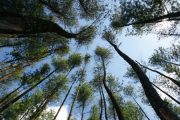Prologue to “Stories From My Prairie Childhood” – Why I’m Here
From retirement on I began to receive and amass a considerable amount of family memorabilia. In 2017 I had become totally overwhelmed by the mountain of disorganized information and didn’t know where to begin. Then I discovered Learning in Retirement at Carlton University. Courses on writing memoirs were available and I jumped at the chance that I might be able to climb that mountain. I’ve been scaling it ever since, at times still overwhelmed, but determined to at least reach the age of 20 on this wondrous and revealing trip into the past. I am assisted by what I learned on the courses and by the informal group that has persisted since my first class with our excellent instructor, Dr. Anna Rumin.
The series “Stories From My Prairie Childhood” focuses on a period that span years of depression and WW ll from the perspective of a pre-teen with two exceptions – “Tough Love” (still to be published) and “Rubella or Rubeola?” (where I was at the ages of 13 and 14). The stories are relatively ordered but may dissolve into disorder from time to time. Memories are like that.
The first story in this series is 1. The Pasture.
2. The Coulee
Today the coulee no longer exists. Also gone are any traces of our farmstead and those of neighbours who had occupied farmsteads every mile or so on either side of Saskatchewan’s Highway 6. All have been replaced with vast expanses of monocropped mega-sized farms that cover hundreds of sections of land.
The coulee of my childhood rambled through pastures that flanked the south and west sides of our quarter section. As it rippled to the east it channeled through a culvert under Highway 6. We were restricted to exploring only the stretch that crossed our own property. To cross onto someone else’s land was to trespass. Not that this was completely enforceable. Fences, roads and rails did show where we shouldn’t go even when we did. Coulees run only in the spring but the moisture left behind benefits clusters of prairie willows that flourish along its trail, and encourages swathes of prairie grass to grow in abundance, except for one small alkaline flat that specialized in foxtail. Dad was never able to conquer this persistent weed.
No matter the season, possibly excluding winter, for Tommy and me, the coulee and its surroundings were full of adventure. When he was older my brother became an avid collector of birds’ eggs. Eggs or no eggs both of us excelled in climbing the poplar trees that grew beyond the willow bushes. I enjoyed looking for prairie flowers that popped up in open spaces – especially Shooting Stars. Prohibitions re not picking wild flowers were not in effect back then. Nevertheless I never touched the Shooting Stars. They were special and not at all common. Fine crops of wild raspberries grew along the margins of the woodlands and we enjoyed picking and eating them. Not many reached home. If you are capable of sin at an early age then we were fledgling sinners.
In April, as the spring thaw progressed, the coulee began to burble up from beneath the melting ice and crumbling snow pack. We were advised to wade in the parts where the water was shallow and relatively safe. Yet we reveled in finding how far we could wade before water overran the tops of our felt lined rubber boots. We weren’t supposed to get our feet wet for fear of getting a cold, or pneumonia, or bronchitis, or arthritis – to mention just a few grim possibilities. However we were fearless. Eventually tadpoles appeared, fun to catch, observe and then release back into the stream. Childish curiosity was apparently a forgivable offense, smelly boots less so. It’s easy to slip when wading.
As for shivers induced by a boot full of icy water, a little fearful shivering made our adventures even more exciting. For example the coyotes that formed choruses as dusk turned to dark. Were coyotes mainly nocturnal? If we spied them or they spied us could there be problems? Shiver! Perhaps some were diurnal. They weren’t supposed to be dangerous to humans but we were very little humans and they might make a mistake. From the safety of our yard the evening sounds of their canine conversations lent an eerie effect as daylight departed and darkness set in. I recall a dream from when I was seven or eight years old. I woke up in the middle of the night, or so I thought, face to face with a coyote calmly sitting by my bed and gazing back at me. One part of my brain said that this was impossible. The other side was entranced by the proximity, or so it seemed, of the coyote. I felt no fear. The image in this dream was so realistic that I could never forget it. Something was communicated but what was it?





